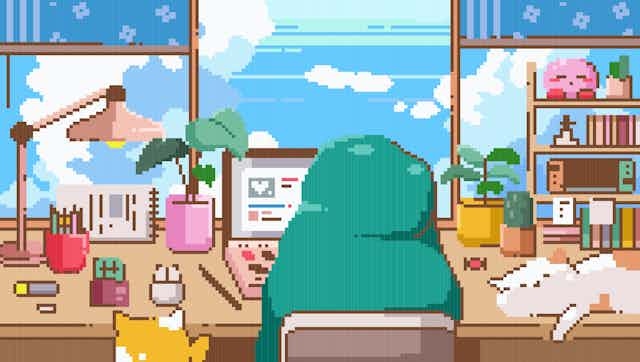The COVID pandemic transformed our lives in ways many of us are still experiencing, four years later. One of these changes was the significant uptake in gaming as a hobby, chief among them being “cosy games” like Animal Crossing: New Horizons (2020).
Players sought comfort in these wholesome virtual worlds, many of which allowed them to socialise from the safety of their homes. Cosy games, with their comforting atmospheres, absence of winning or losing, simple gameplay, and often heartwarming storylines provided a perfect entry point for a new hobby. They also offered predictability and certainty at a time when there wasn’t much to go around.
Cosy games are often made by small, independent developers. “Indie games” have long been evangelised as the purest form of game development – something anyone can do, given enough perseverance. This means they can provide an entry point for creators who hadn’t made games before, but were nevertheless interested in it, enabling a new array of diverse voices and stories to be heard.
In May 2020, near the start of the pandemic, the small poetry game A Solitary Spacecraft, which was about its developer’s experience of their first few months in lockdown, was lauded as particularly poignant. Such games showcase a potential angle for effective cosy game development: a personal one.
Personal themes are often explored through cosy games. For instance, Chicory and Venba (both released in 2023) tackle difficult topics like depression and immigration, despite their gorgeous aesthetics. This showcases the diversity of experiences on display within the medium.
However, as the world emerges from the pandemic’s shadow, the games industry is facing significant challenges. Economic downturns and acquisitions have caused large layoffs across the sector.
Historically, restructurings like these, or discontent with working conditions, have led talented laid-off developers to create their own companies and explore indie development. In the wake of the pandemic and the cosy game boom, these developers may have more personal stories to tell.
Making my own cosy game
I developed my own cosy and personal game during the pandemic and quickly discovered that creating these games in a post-lockdown landscape is no mean feat.
What We Take With Us (2023) merges reality and gameplay across various digital formats: a website, a Discord server that housed an online alternate reality game and a physical escape room. I created the game during the pandemic as a way to reflect on my journey through it, told through the videos of game character Ana Kirlitz.
Players would follow in Ana’s footsteps by completing a series of ten tasks in their real-world space, all centred on improving wellbeing – something I and many others desperately needed during the pandemic.
But creating What We Take With Us was far from straightforward. There were pandemic hurdles like creating a physical space for an escape room amid social distancing guidelines. And, of course, the emotional difficulties of wrestling with my pandemic journey through the game’s narrative.
The release fared poorly, and the game only garnered a small player base – a problem emblematic of the modern games industry.
These struggles were starkly contrasted by the feedback I received from players who played the game, however.
This is a crucial lesson for indie developers: the creator’s journey and the player’s experience are often worlds apart. Cosy, personal games, as I discovered, can change the lives of those who play them, no matter how few they reach. They can fundamentally change the way we think about games, allow us to reconnect with old friends, or even inspire us to change careers – all real player stories.
Lessons in cosy game development
I learned so much about how cosy game development can be made more sustainable for creators navigating the precarious post-lockdown landscape. This is my advice for other creators.
First, collaboration is key. Even though many cosy or personal games (like Stardew Valley) are made by solo creators, having a team can help share the often emotional load. Making games can be taxing, so practising self-care and establishing team-wide support protocols is crucial. Share your successes and failures with other developers and players. Fostering a supportive community is key to success in the indie game landscape.
Second, remember that your game, however personal, is a product – not a reflection of you or your team. Making this distinction will help you manage expectations and cope with feedback.
Third, while deeply considering your audience may seem antithetical to personal projects, your game will ultimately be played by others. Understanding them will help you make better games.
The pandemic reignited the interest in cosy games, but subsequent industry-wide troubles may change games, and the way we make them, forever. Understanding how we make game creation more sustainable in a post-lockdown, post-layoff world is critical for developers and players alike.
For developers, it’s a reminder that their stories, no matter how harrowing, can still meaningfully connect with people. For players, it’s an invitation to embrace the potential for games to tell such stories, fostering empathy and understanding in a world that greatly needs it.

Looking for something good? Cut through the noise with a carefully curated selection of the latest releases, live events and exhibitions, straight to your inbox every fortnight, on Fridays. Sign up here.

